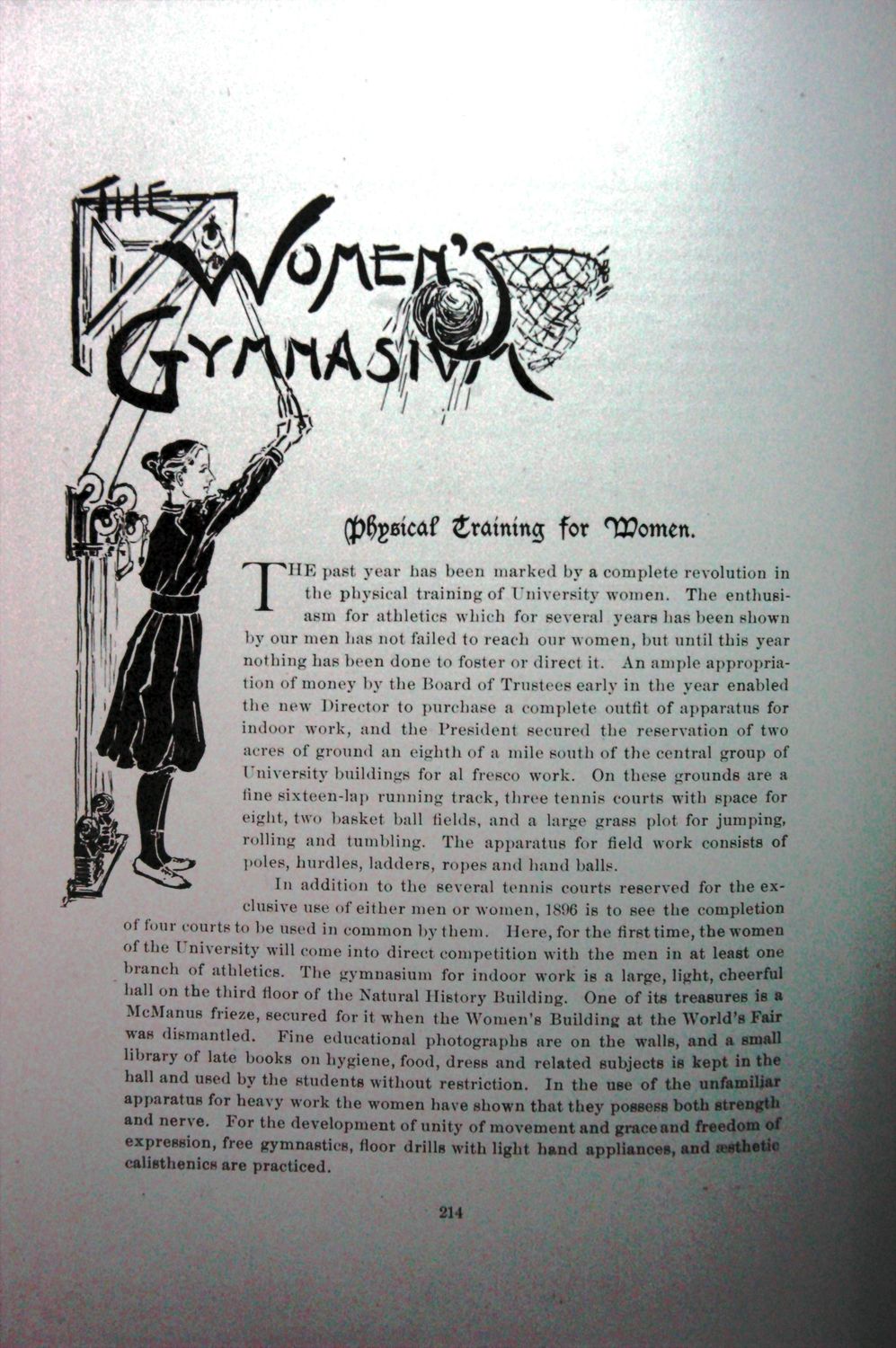| |
| |
Caption: Illio - 1896
This is a reduced-resolution page image for fast online browsing.

EXTRACTED TEXT FROM PAGE:
(pGgatcaf training for TEomen. H E past year has been marked by a complete revolution in the physical training of ("Diversity women. The enthusiasm for athletics which for several r e a r s has been shown • by our men has not failed to reach our women, but until this year nothing has been done fco foster or direct it. An ample appropriation of money by the Board of Trustees early in the year enabled the new Director to purchase a complete outfit of apparatus for indoor work, and the President secured the reservation of two acres of ground an eighth of a mile south of the central group of University buildings for al fresco work. On these grounds are a fine six teen-lap running track, three tennis courts with space for eight, two basket ball fields, and a large grass plot for jumping, rolling and tumbling. The apparatus for field work consists of poles, hurdles, ladders, ropes ami hand balls. 1» addition to the several tennis courts reserved for the exclusive use of either men or women, 1896 is to see the completion of four courts to be used in common by t h e m . H e r e , for the first time, the women of the \ niversity will come into direct competition with the men in at least one branch of athletics. The gymnasium for indoor work is a large, light, cheerful hall on the third floor of the Natural History Building. One of its treasures is a McManus frieze, secured for it when the Women's Building at the World's Fair was dismantled. Fine educational photographs are on the walls, and a small library of late books on hygiene, food, dress and related subjects is kept in the hall and used by the students without restriction. In the use of the unfamiliar apparatus for heavy work the women have shown that they possess both strength and nerve. For the derelopment of unity of movement and grace and freedom of expression, free gymnastics, floor drills with light hand appliances, and osthetio calisthenics are practiced. I'M
| |